Do you and your dog crave new heights, sweeping views, and rewarding physical challenges? Then rock-climbing with your canine might be the hobby for you!
While the logistics of climbing with your canine may seem like an impossible challenge, it’s a gratifying pastime for the right climber and dog. Armed with the proper equipment and safety in mind, you and your pup can enjoy hours of fresh air, sunshine, and exercise!
Below, we’ll offer some safety tips and ideas for climbing with your canine, plus we’ll identify a dog climbing harness that will help keep your pooch safe while scaling your next big slab. You and Rover will be ready to climb in no time!
Best Dog Climbing Harness: Key Takeaways
- With proper planning, the right equipment, and an eye toward safety, it is possible to rock climb with your canine.
- Along with all of your typical rock-climbing equipment, you’ll need a climbing harness for your dog. The Ruffwear Dog Climbing Harness is easily the best option on the market.
- Before you grab your dog and head for the mountains, you’ll want to carefully consider if you and your dog are up to the challenge.
Is It Safe to Climb with a Dog?
Climbing with your canine isn’t a decision that you should take lightly. So, before you start gathering equipment and picking a destination, take a step back and consider safety first.
Any climb presents a significant risk, for both you and your pooch – some climbs more so than others.
All climbers know that particularly challenging climbs pose a risk of fatal injury. And even with simpler climbs, there’s at least some risk of a twisted ankle, a fall, or other type of bodily harm. That said, the rewards still outweigh the risk for many.
Here are some of the major factors to consider before you start out:
- Your climbing skill. Is this your first time scaling a cliff after graduating from the climbing gym? Then it’s probably best to leave your hound at home. Get some hands-on experience and learn the ropes yourself before you add your precious pooch to the mix.
- Your dog’s temperament. Certain outdoor-adventuring breeds tend to enjoy the outdoors more than others. If you have a skittish canine or one that’s not the adventurous type, climbing will likely be an unappealing pastime for him. Make sure your canine is comfortable with new and daring situations before you set out on an exciting escapade!
- The specific rock you intend to climb. Not all climbs are alike, and not all are compatible with canines. Start out with easier summits to get your pooch used to traversing uneven and rocky terrain.
The Best Dog Climbing Harness
Aside from your own climbing equipment, you’ll need to fit your dog with a climbing harness before heading up your favorite rock.
When it comes to harnesses specifically designed for climbing, there is really only one option on the market: Ruffwear’s Rock Climbing Dog Harness.
This is a sponsored placement, in which an advertiser pays a fee to be featured in this article. Learn more
Functional for light bouldering or precarious climbs, this durable and multi-purpose harness combines comfort with strength – it’s the perfect balance for a climbing harness!
Features:
- It’s offered in small, medium, large, and extra-large sizes.
- It’s easily customizable, with seven points for adjustment to suit your pooch’s body.
- The harness has a conveniently placed handle that allows for easy maneuvering, and with seven hooks, it’s easy to clip to your harness.
- It’s strength-rated for up to 2,000 pounds of force.
PROS
Ruffwear’s product is made by climbers, for climbers – you can rest assured that this harness is safe and efficient for a day on your favorite outcrop. Owners who’ve tried it report that the material is highly durable — it can stand up to the elements and regular wear and tear from long days outside.
CONS
While this harness is highly regarded by climbers, some owners note that it can be difficult to find the right size for your dog. Also, adjusting the straps can be a bit cumbersome, so it’s not the best option to take on and off several times a day on longer hikes or climbs.
Which Kinds of Dogs Are Best-Suited for Climbing?
There are no hard-and-fast rules about which dogs will or will not make good climbing companions.
However, there are a couple of things you’ll want to keep in mind to ensure you and your pup stay safe, and have a good time while climbing.
Smaller Dogs Are Easier to Hoist
Think little pooches can’t keep up on an outdoor adventure? Think again! Small dogs are often very well-suited for climbing adventures.
In fact, the smaller the canine, the easier lifting will be if your pooch gets tuckered out, injured, or just needs a leg up. Climbing with a small dog will also allow you to conserve your own energy easier.
And don’t forget: Smaller pooches can enjoy the outdoors just as much as bigger guys!
Nervous or Anxious Dogs Are Unlikely to Enjoy Climbing
Some dogs are simply not going to be comfortable with climbing. From constricting harnesses, dependence on humans, and rapidly changing terrain, climbing or hiking with dogs who are prone to anxiety is only going to make matters worse.
Typically, calmer, more confident canines will make the best climbing companions.
Long Hair Can Be an Additional Challenge
Our furry friends with longer locks can pose some added challenges for climbers.
For starters, burs, ticks, and other nuisances can hide deep in canine coats, causing discomfort and even potential health risks. Additionally, long-haired dogs can make it more challenging to achieve a comfy harness fit.
You’ll also need to bathe or groom especially hairy hounds after outdoor adventures.
Avoid Climbing with Injured or Otherwise-Limited Dogs
Safety and comfort are key when it comes to canine climbers. Only dogs in tiptop shape should start out on an outdoor adventure to avoid untimely incapacitation.
Additionally, dogs with joint problems or other potentially painful conditions should stick to easy trails and walks.
If you’re unsure whether your dog is up to the challenge of rock climbing, consult with your vet.
Be Sure to Consider the Climate and Your Canine
It’s important to remember that you’ll be exposed to the elements when climbing a rock with your pup.
A husky may get a little overheated while climbing a sun-blasted rock in the summer, while a Chihuahua may become chilled if the winds pick up.
A dog cooling vest or canine sweater may help to keep your pet comfortable in warm or cool weather, but these garments may also make it more difficult to fit your dog with a climbing harness.
Climbing With Your Dog: Important Safety Tips
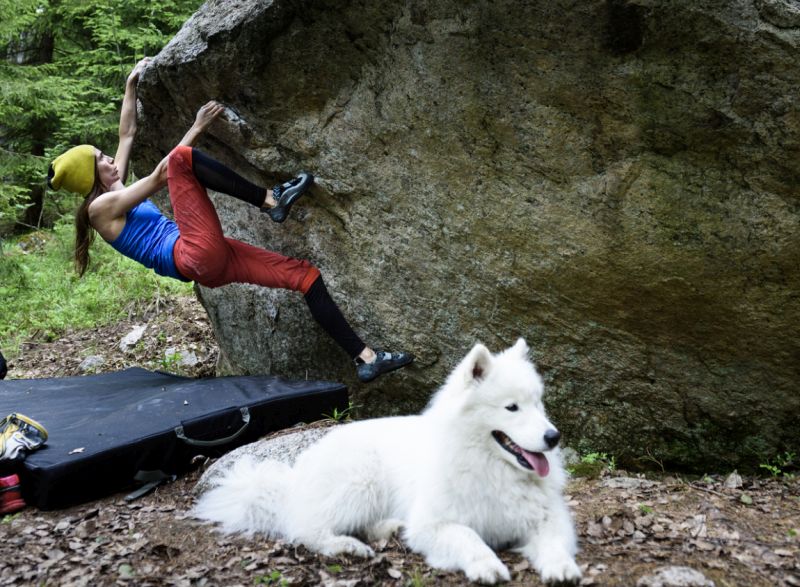
Picking the perfect harness is essential for keeping your pup secure during a climb – but it’s not a foolproof way to ensure your pup’s safety and enjoyment.
For climbers of all experience levels, adding your pooch into the mix adds an added degree of peril. Fortunately, we’ve got several tips to mitigate the risk and make your outdoor experiences a positive one!
Here are some ways to keep your canine safe and your climb enjoyable:
- Bring the right equipment. Having the right harness is only the tip of the iceberg when it comes to canine climbing equipment. Make sure you bring along the bare necessities like water bottles, a dog first aid kit, and plenty of treats, too!
- Use the buddy system. For your first couple of climbs with the canine, it’s probably wise to bring along a human friend who can help you and your pooch in a jam. Once your dog is comfortable with the process, you can graduate to solo missions.
- Know your dog’s limitations. Climbing should be a stress-free diversion for humans and hounds! If your dog is absolutely miserable and extremely stressed, know when it’s time to call it a day.
- Use positive reinforcement. You can help make the climbing experience a pleasant one by giving your pooch treats throughout the day, especially after challenging segments. Offer him ample time to sniff and explore as well.
- Don’t push it. You’ll want to push your own limits by yourself – only embark on hikes or climbs that you are totally comfortable doing without your dog. Challenge yourself solo before you bring your pooch along.
- Watch for signs of dehydration. Spending hours in the sun can easily lead to dehydration for your dog. Offer water repeatedly throughout the day, and have a plan to rehydrate your dog on the trail in case of an emergency.
- Keep the weather in mind. Extreme weather conditions can offer a host of challenges to any climb, especially when your dog is involved. Think twice before you and your pup head out in extreme heat or cold, and consider the effects of rain or snow, too.
- Consider protecting your pup’s paws with booties. Your dog doesn’t have the luxury of fancy climbing boots, so consider some booties to protect his precious paws. Dangers like rough rocks, thorns, and more are tough to avoid, so booties help mitigate some of the risk.
- Use a leash between pitches. While the Ruffwear Rock-Climbing Dog Harness will keep your pooch safe while you’re climbing, you’ll want to be sure your dog doesn’t get into trouble during breaks or while snapping photos. So, make sure to keep your dog leashed securely around any cliffs or drop offs.
- Be careful with the chalk. Chalk may help you get a better grip on the rock face, but it can cause serious problems if it gets in your dog’s eyes. So, use care when dipping into your chalk bag, and consider fitting Fido with some protective dog goggles.
Don’t forget to pack a rescue harness, so that you’ll be prepared if your dog suffers an injury!
***
Rappelling or climbing is a refreshing and invigorating way to get outside in the sunshine for both you and your pooch. What harness or gear do you pack for climbing excursions? Any tried and true canine climbing tips? Let us know in the comments!
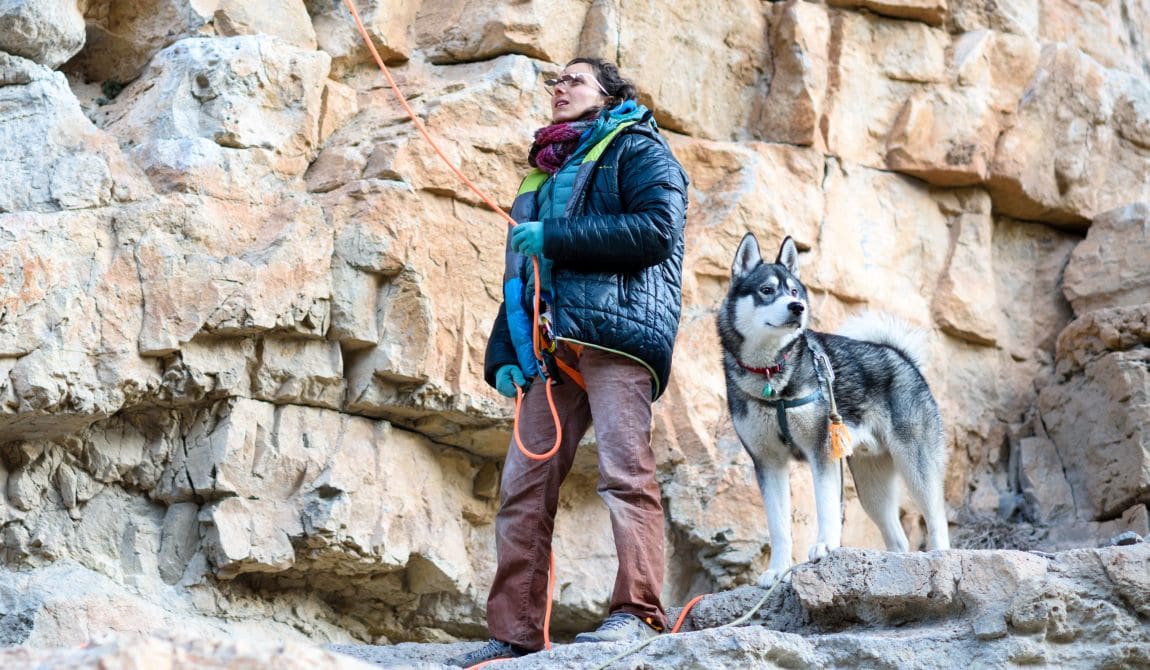


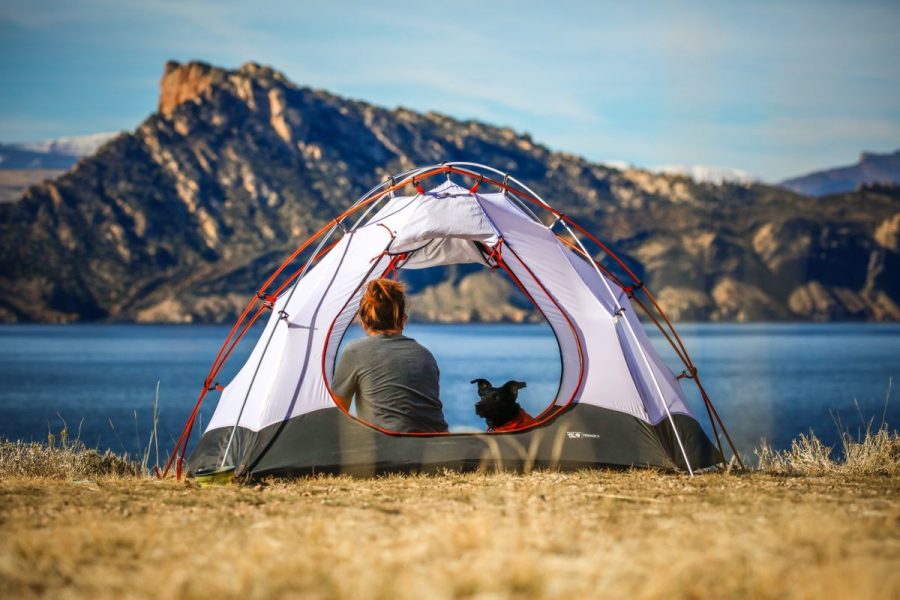


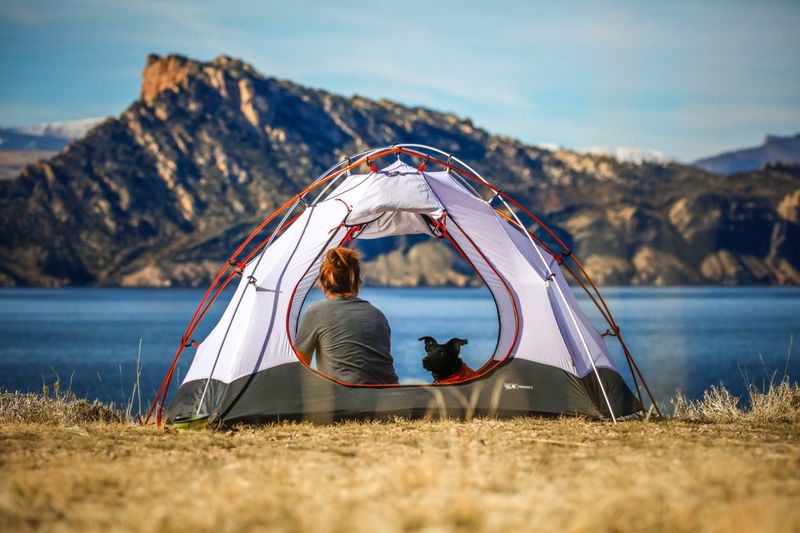
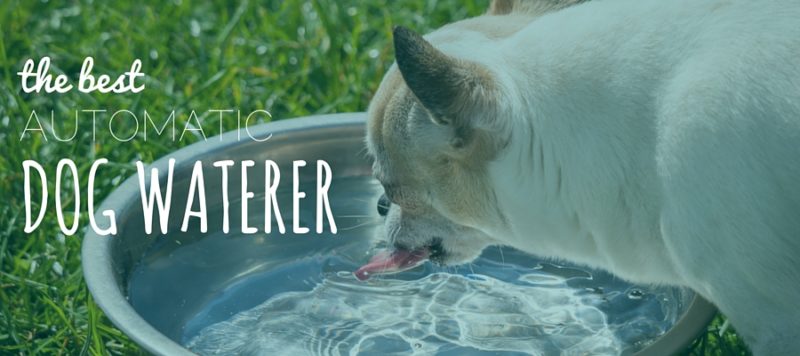
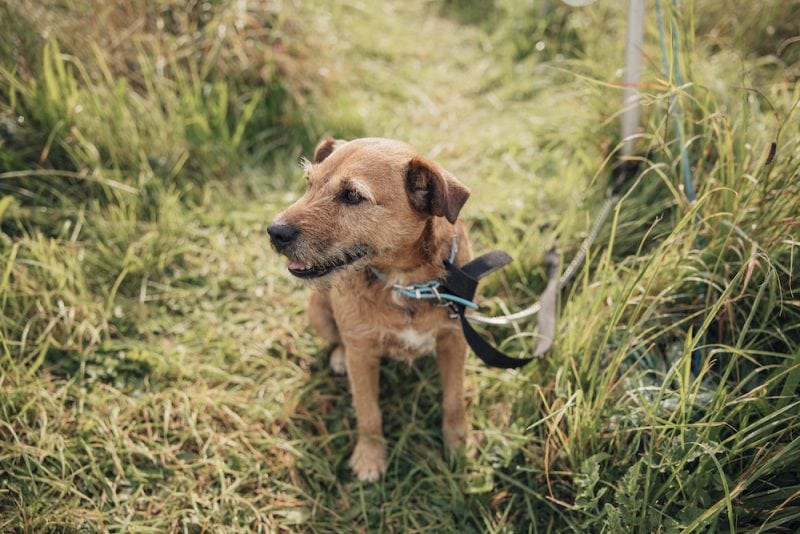
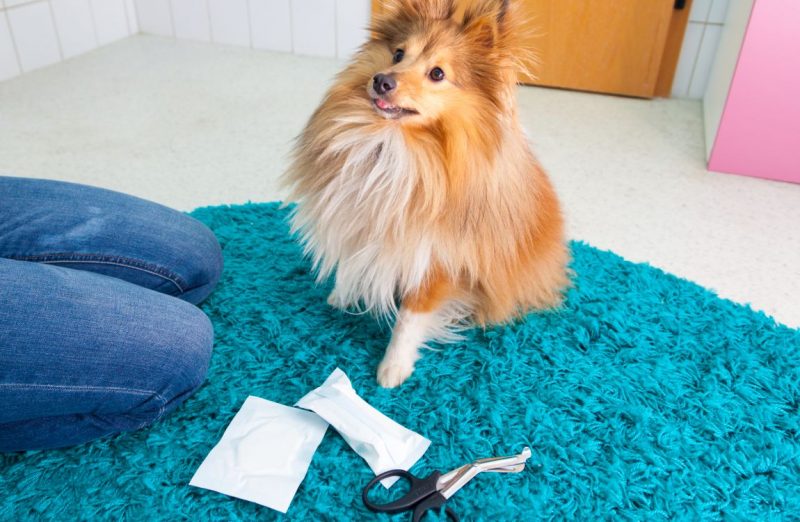
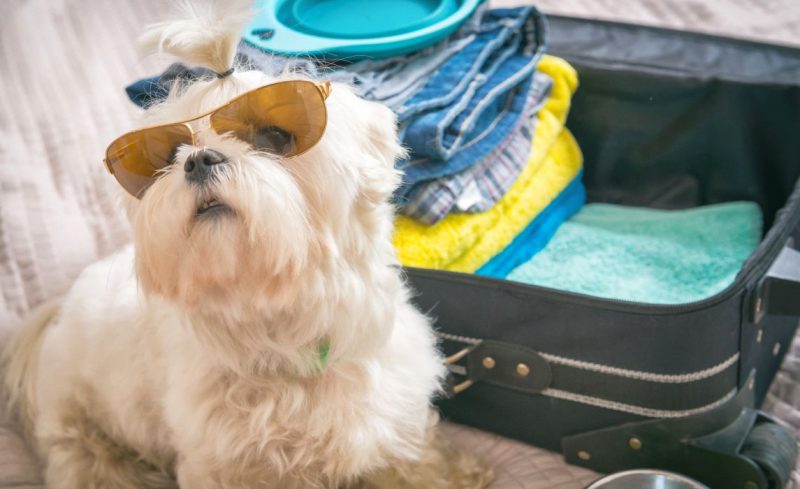
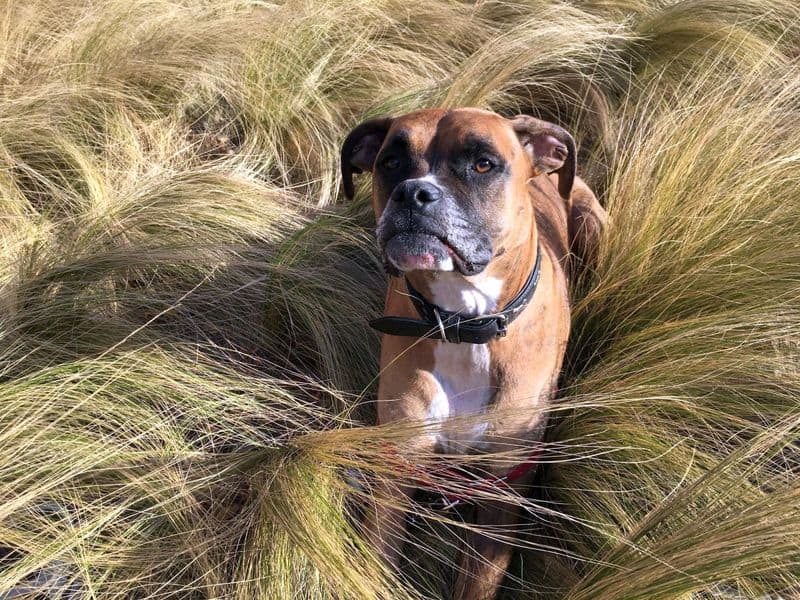
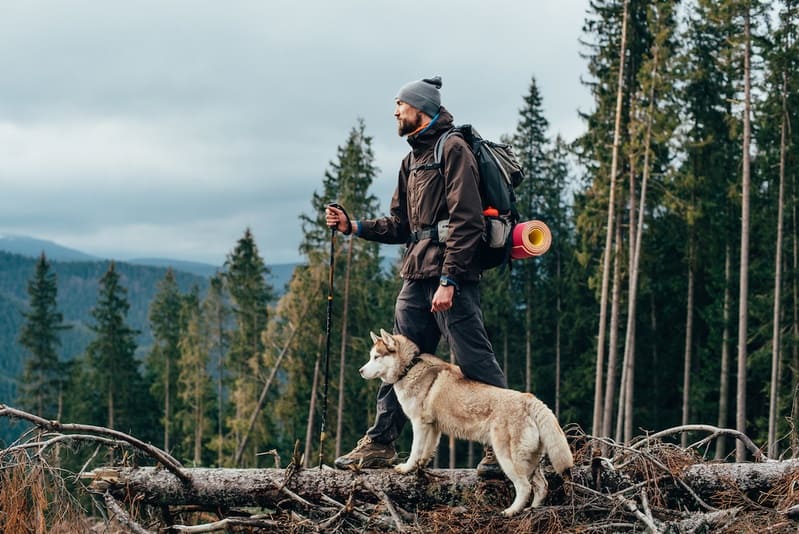
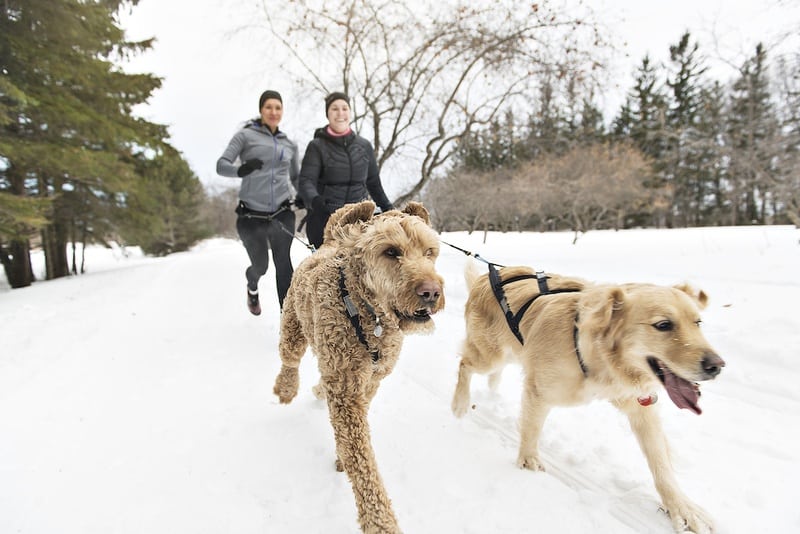

Leave a Comment